I took part in the inaugural Scottish Mountain Marathon 2019. It was my first two-day mountain marathon and I enjoyed the challenge, both mentally and physically.
Also have a read:
- My first impressions of a mountain marathon
- 21 great tips for a mountain marathon.
- Review of OMM Halo pants and OMM Kamleika jacket.
- Review of OMM Mountain Rail jacket and OMM Mountain Raid 1.0 sleeping bag
What is a mountain marathon?
A mountain marathon is an extended form of fell or mountain running, usually over two days and always with a strong orienteering element. Competitors participate in pairs or solos, depending on the event, and they must carry their own kit for two days of self-sufficiency, including food and tent.
There are a range of competition courses, Elite, A, B, C and Long, Medium and Short Score.
Elite, A, B and C are linear courses and each checkpoint must be reached in order. The fastest person or pair to complete all checkpoints in the right order is the winner. From Elite to C the course becomes easier. Penalties are awarded for being late back and missing checkpoints.
Score courses require participants to choose the checkpoints to reach and in any order. Each checkpoint has a different score. The Long, Medium and Short courses are timed, with long being the longest time. Penalties are awarded for being late back. Classes are male, female and mixed.
The inaugural Scottish Mountain Marathon
The first Scottish Mountain Marathon took place last weekend. The base was Attadale Gardens, Strathcarron, in the north-west Scottish Highlands.
A large area of wild landscapes became the playground for some 200 pairs of competitors during two days of ticking off checkpoints. There was an overnight camp close to Bendronaig Lodge.

Let’s enjoy the adventure
The night before the SMM, as I registered for the race at Attadale Gardens, with my good friend Rob, I gazed around the event tent and field.
Many participants looked like racing whippets and experienced orienteers. I could tell immediately that these people knew what kit to pack, how to pace themselves, exactly how to choose and navigate to checkpoints and the finer details of being fast over tough mountainous terrain.
I felt intimidated. At many other races, I reckon I look the part and I usually feel a great deal more confident but the mountain marathon format was new to me.
Discussing this with Rob, we decided we would treat the weekend as an adventure and a training session. We would not worry about the competition but aim to do the best we could and enjoy the experience.

Packing for a mountain marathon
Prior to the race, I’d done my best to work out what to pack and how to make my pack as light as possible. I usually loathe a heavy pack and because I am relatively lightweight myself I aim to carry as little as possible while taking enough kit to be safe and warm.
I had laid out the mandatory race kit (see kit list), sourced some ultra lightweight kit through OMM products and snapped my toothbrush in half (did I really need a toothbrush handle?!).
Other weight savings included looking out miniature products, such as tiny tubes of toothpaste and sun cream saved from various hotel and plane trips.
I know I get cold so I packed two lightweight insulated jackets for night-time, as well as dry socks, tights and a t-shirt. I added gloves because I suffer with Raynaud’s, even in summer.
I packed some zinc oxide climber’s tape and a couple of Compeed blister plasters just in case of rubs and sores on my feet. (The Compeed did save Rob from the agony of a worsening blister.)
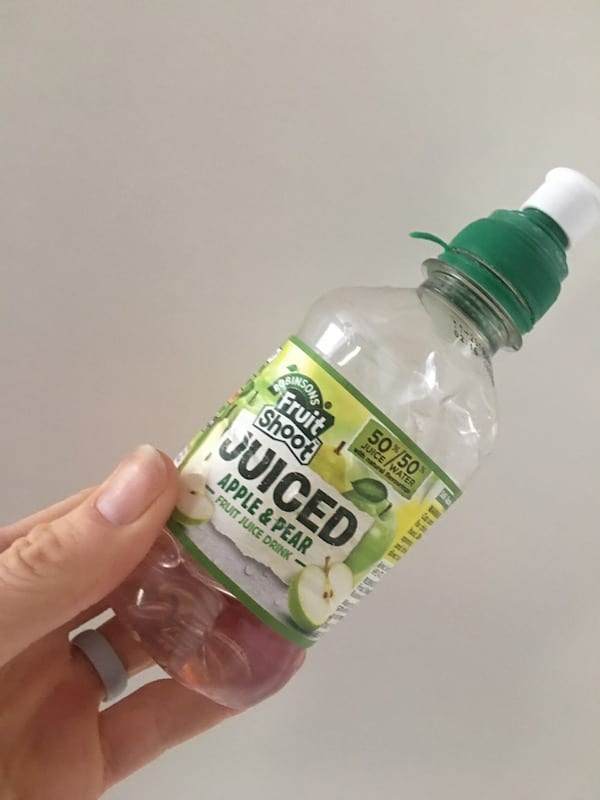
I wanted a small luxury, so I emptied the juice (disgusting!) from a Fruit Shoot bottle (it was the smallest plastic bottle I could find in the supermarket) and added a good helping of gin and berry liqueur. Almost everyone I asked had a little luxury item and whisky was popular.
I worked out the food I would need to eat throughout the day – small pork pies, mini Peperami sticks, Babybel cheeses and cereal bars. (I am not a fan of energy gels. Instead, I packed high-calorie foods that are moist and easy to eat on the move.)
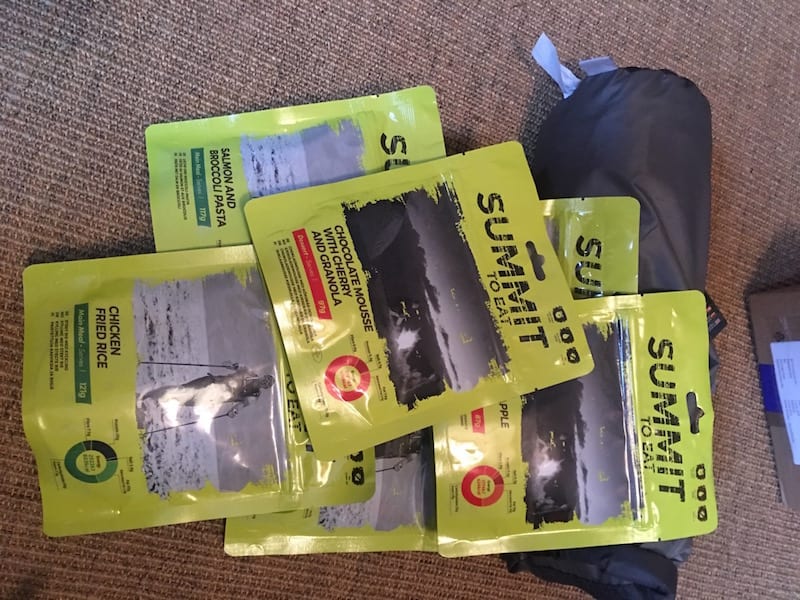
I sourced Summit to Eat freeze-dried meals for the Saturday evening and the Sunday morning because Rob told me they were lightweight and filling when rehydrated.
I also took a one-person Mountain Hardwear tent (0.85kg), an inflatable NeoAir thermarest and a very lightweight OMM Raid 1.0 sleeping bag. While most pairs of competitors were tent sharing, Rob and I were sleeping in our own tents because our partners preferred it that way. We respected their wishes and, in any case, I like my own we tent space but this did mean we each had extra kit to carry.
I carried a camping stove and Rob brought the gas canister. Other bits and pieces included my iPhone, a compass, emergency foil blanket, normal glasses, plastic cup, spork, a spare buff and the all-important midge net.
I wore a running skort, t-shirt, long-sleeved baselayer, socks, trail running footwear, a buff and prescription sunglasses.

Checkpoints and mountain running
There are different courses to enter in a mountain marathon, including linear and score, and we had entered Long Score. This meant we chose the checkpoints (CPs) to collect. On day one we had seven hours of CP collecting and on Day 2 we had six hours. If we were late back we would collect time penalties.
It’s a strange kind of race because as soon as you cross the start line you stop. It’s only after starting that you are handed the day’s map and you can then take a look at the location of the CP. This is when you take the time to assess where you will go.
So, on day one, Rob and I started – and then sat down on the grass just outside the camp. We discussed possible CPs to reach and a sensible route. We looked at the distances, points to be scored and height gain required to reach a CP. We spotted the overnight camp marked on the map.
We noticed other people setting off in all directions but we had no idea which course they were doing nor what their plan was for the day. Each Score pair had to choose their CPs and route.
And things can change as you get going…
We had decided on our first few CPs and as we became more familiar with the type of terrain we would face – rough, often trackless, undulating and mountainous – we made some reassessments.
I have no doubt that people with more experience were quicker to choose their route and faster over the ground but we wanted to learn as we went along – and we were keen to make joint decisions.
For me, it was a great experience and an amazing learning curve. Navigation on a micro scale was mentally challenging but also rewarding. Rob and I hit every CP we had aimed for although some were easier to locate than others.

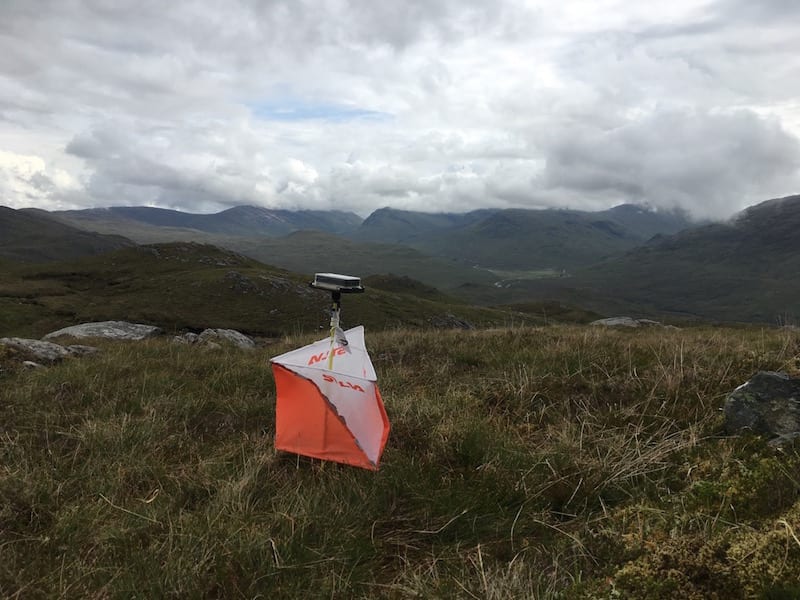
One word: Reentrant
I had heard of this mythical “reentrant” prior to the race but I wasn’t exactly sure what it would be on the ground. A “reentrant” CP is one that is situated on an inward angle; in the inward curve of a contour. This means that because it is not on raised ground it is harder to spot from a distance.
For some reason, Rob and I became a little obsessed with reentrants. It was hugely satisfying to find these and we used a combination of following a compass bearing while also keeping track of our contour height on Rob’s altimeter. It worked a treat mostly, but we were aware that by choosing to find reentrants we were losing time on the course.
But, you know what? It felt good to be able to navigate in tiny detail and without GPS.
As we ran and hiked across the large area of remote Highlands landscape we also caught up with our chat. Rob and I are friends through Munro bagging and we share the same career industry so we always have a lot to chat about.
The mountain marathon wasn’t simply a competition for us, rather it was an adventure weekend and a chance to spend time together and catch up on this and that.

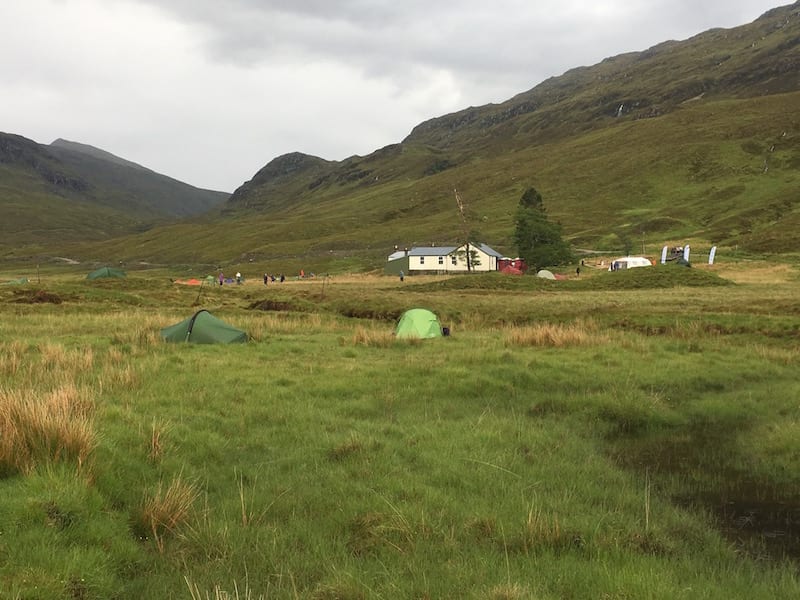

Two words: Camp life
The overnight camp is simple. You have all your kit on your back. There is fresh water in the river. Mobile toilets were provided.
The aim is to set up camp as soon as you can, eat, drink something hot, chat over the day’s racing, enjoy a luxury (if you decided to pack a wee dram or a Fruit Shoot of gin. See 21 tips for a mountain marathon) and sleep.
Unfortunately, as we set up camp it was raining hard. It rained hard for the next couple of hours. My aim was to get changed into dry and warm clothes, put up my tent before the midges came out, eat a meal, rehydrate, try to avoid leg cramps, enjoy a gin and then get off to sleep.
All this happened mostly in the right order and I remained fairly warm. I wore one down jacket on my torso and tucked the other down the OMM Raid 1.0 sleeping back around my feet. The sleeping bag is brilliantly light to carry and warm enough on a summer’s night if you’re also wearing clothes, such as socks, thermal leggings and baselayer and a down jacket. I added an extra down jacket at my feet and around my legs.
There is an OMM Raid 1.6 if you don’t mind a little extra weight and you want more warmth.
Thankfully the air temperature did not dip too low and it wasn’t windy. If it was a chilly night I think I would need a thicker sleeping bag but, then again, I would need to carry this over the two days of racing and that is a weight consideration.
In mountain marathons, as I quickly learned, it’s a balancing act between weight and warmth.
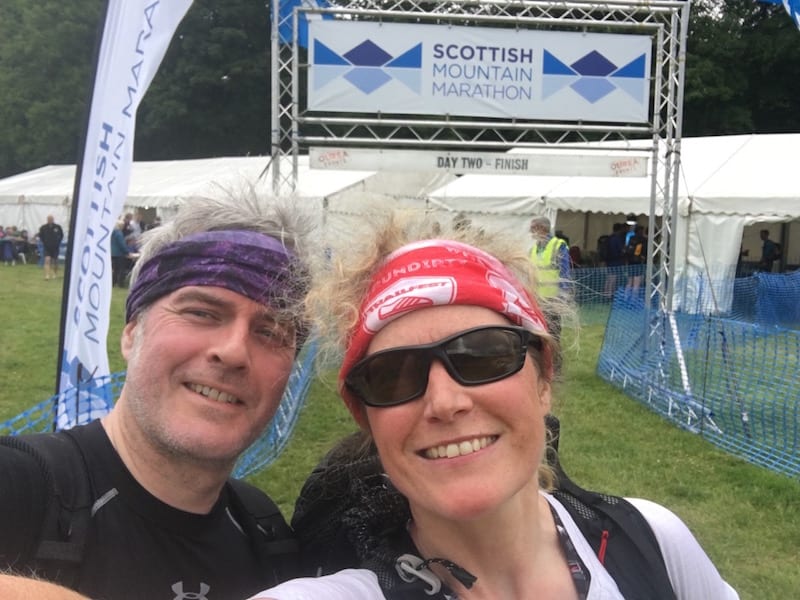
Three words: Fear of penalties
If you reach the finish line on either day outside your time limit you lose hard-earned points. From 0 to 5 minutes late, it’s 1 point per minute and then 2 points per minute from 5 minutes to 15 minutes. For the next 15 minutes, it’s 5 points per minute. If you are more than half an hour late, all points are lost. (This did happen to a pair doing our Long Score course.)
These cut-off times played on our minds and especially in the last couple of hours of each day. We spent time asking ourselves if we had time to reach another CP or if we should play it safe and head back a bit earlier.
On day one we reached the finished line early. It had been raining hard and we had faced a tricky river crossing in the final hour and I think we were both relieved to be heading to the campsite with plenty of time to spare.
Of course, it’s too easy to replay the steps of the day and wonder whether you could have got just one more CP and extra points but we tried not to dwell on this.
On the second day, we had to run quite hard for the last half and hour to make the finish line in time. An exit via a deep gorge with muddy paths and an unforgiving traverse of a fern thick slope* had taken far longer than we had estimated and by the time we reached a more runnable track we knew we might be out of time.
Again, we discussed whether we had chosen the right CPs that day; taken the right route; whether other people had worked out a better line than us; if we had been silly to have tried to reach a CP on a high summit; whether we should have gone for the Munro peaks instead of sticking to lower ground; and if the exit plan had been the best one.
But, on each of the days, we did what we thought was the best route and plan. We were not last in our competitive Long Score course, although we were not that high up the field either, and we were aware we were up against some amazing and experienced orienteers and mountain marathon participants. (In fact we were fifth mixed pair so that’s ok really isn’t it?)
*There was a small low point!
During the final stages of day two I love my sense of humour for about five minutes. We were traversing a steep slope of thick, scratchy ferns and cruel knobbly trees in a deep river gorge. It was slow and uncomfortable and I was tired and hungry.
I suddenly heard myself cursing and grumbling under my breath, letting rip with more than a couple of FFSs.
My thoughts rage wildly: “What the fuck am I doing here? All these fucking ferns and trees. My poor legs and arms will be shredded. When will this torture end? How many bloody points will we lose for being late to the finish line? Fuck, I can’t stand to lose points after all the hard work. Why did I agree to this race in the first place?”
But, as I said, it amounted to only five minutes of h-anger (hungry anger) close to the end of the two-day Scottish Mountain Marathon. As soon as we re-found a more obvious path and I felt like we were getting somewhere faster than an injured snail my mood lightened again. (I was also aware that I didn’t want Rob to think he’d chosen an angry partner.)
For the other 12 hours and 55 minutes of tough racing, plus a wild camp overnight, I had been happy, upbeat and focused on having fun.
I reckon that only five-minutes of h-anger during a challenging race and in my first attempt at a two-day mountain marathon was an impressive result. It could have been a lot, lot worse I figured.
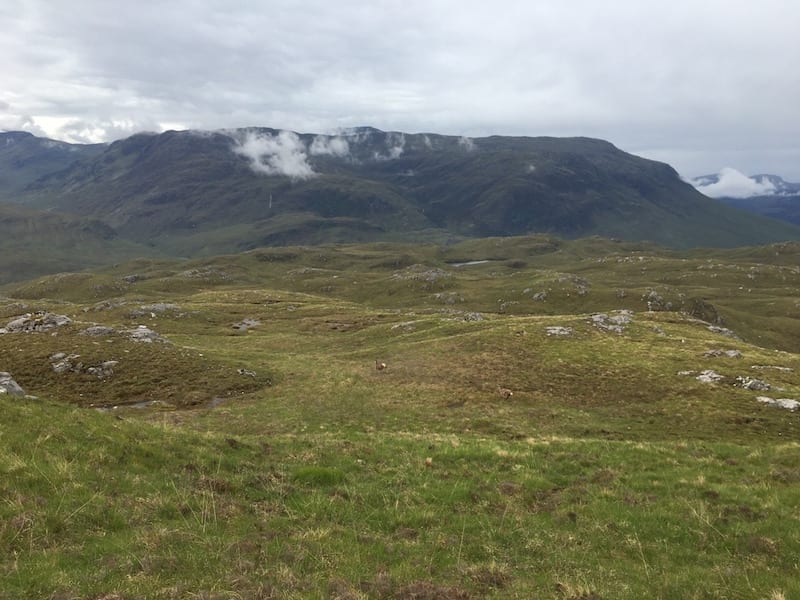
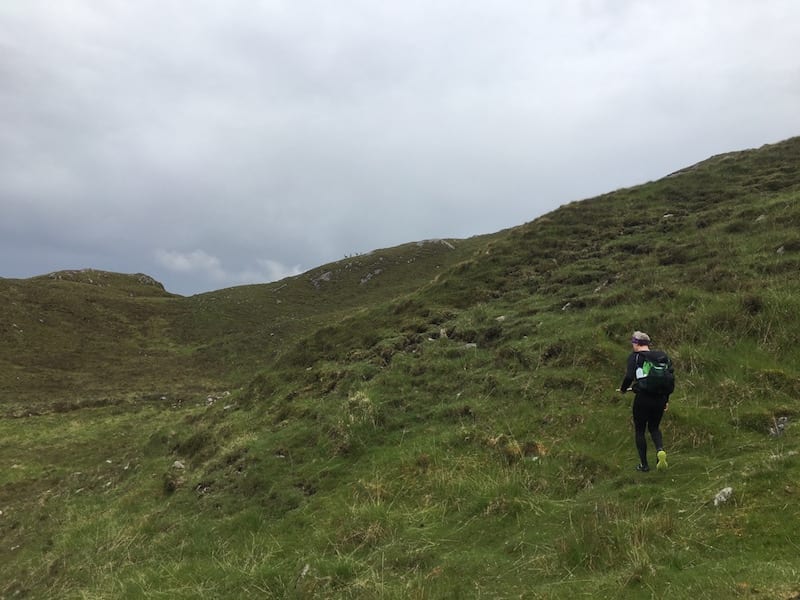

Final thoughts: The Scottish Mountain Marathon
Above all, Rob and I had fun. We enjoyed the adventure and I learned a huge amount about micro navigation.
I loved the landscapes and the feeling of being so remote and cut off from the busy real world for two days. We also met some lovely and very friendly people.
I appreciate that fact that the sport is not just running. It’s thinking hard about every step. It’s a cerebral kind of outdoors pursuit and that ticks lots of boxes for me.
I think I might well be back for more…
Subscribe for details about the Scottish Mountain Marathon 2020.

